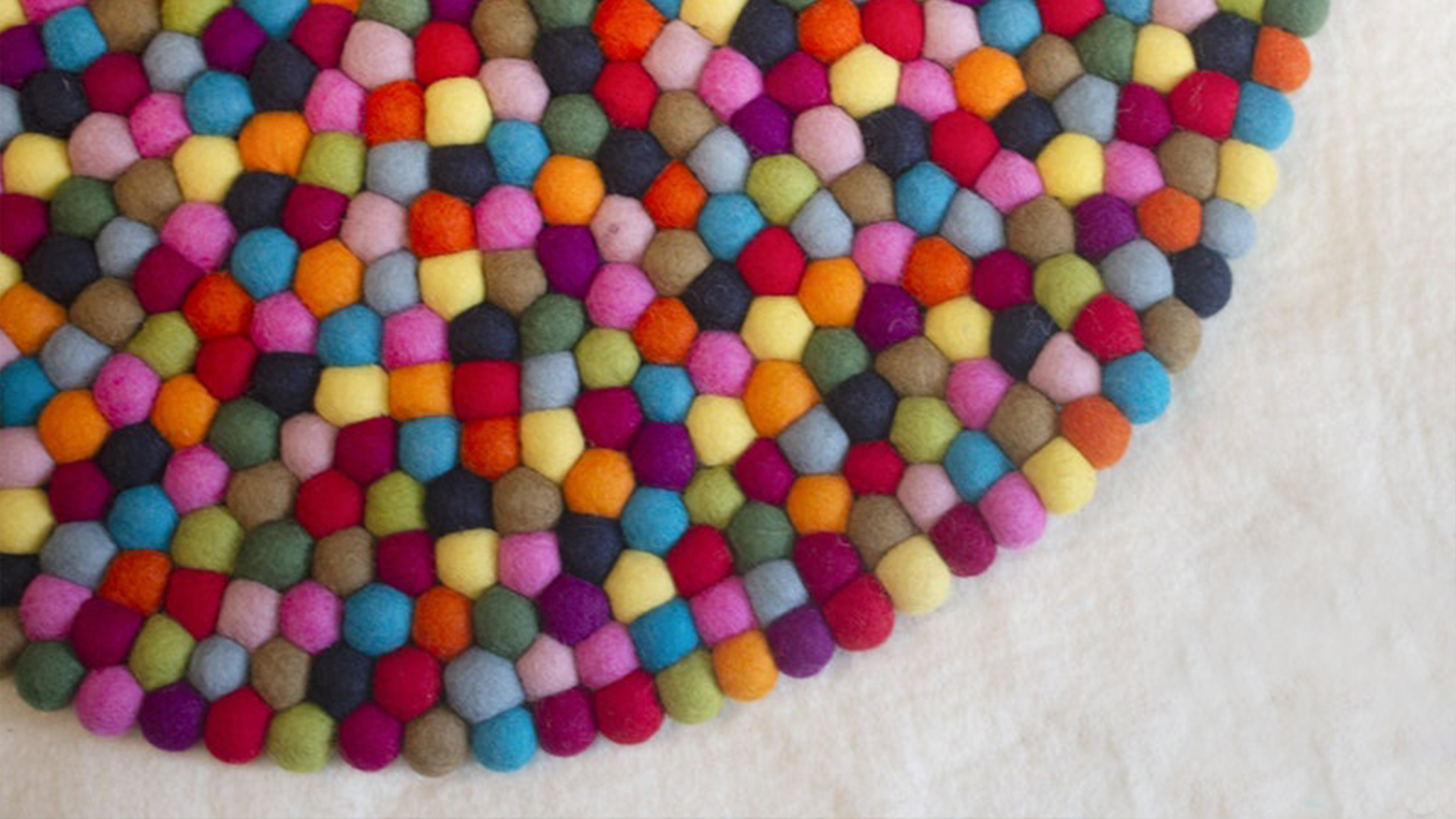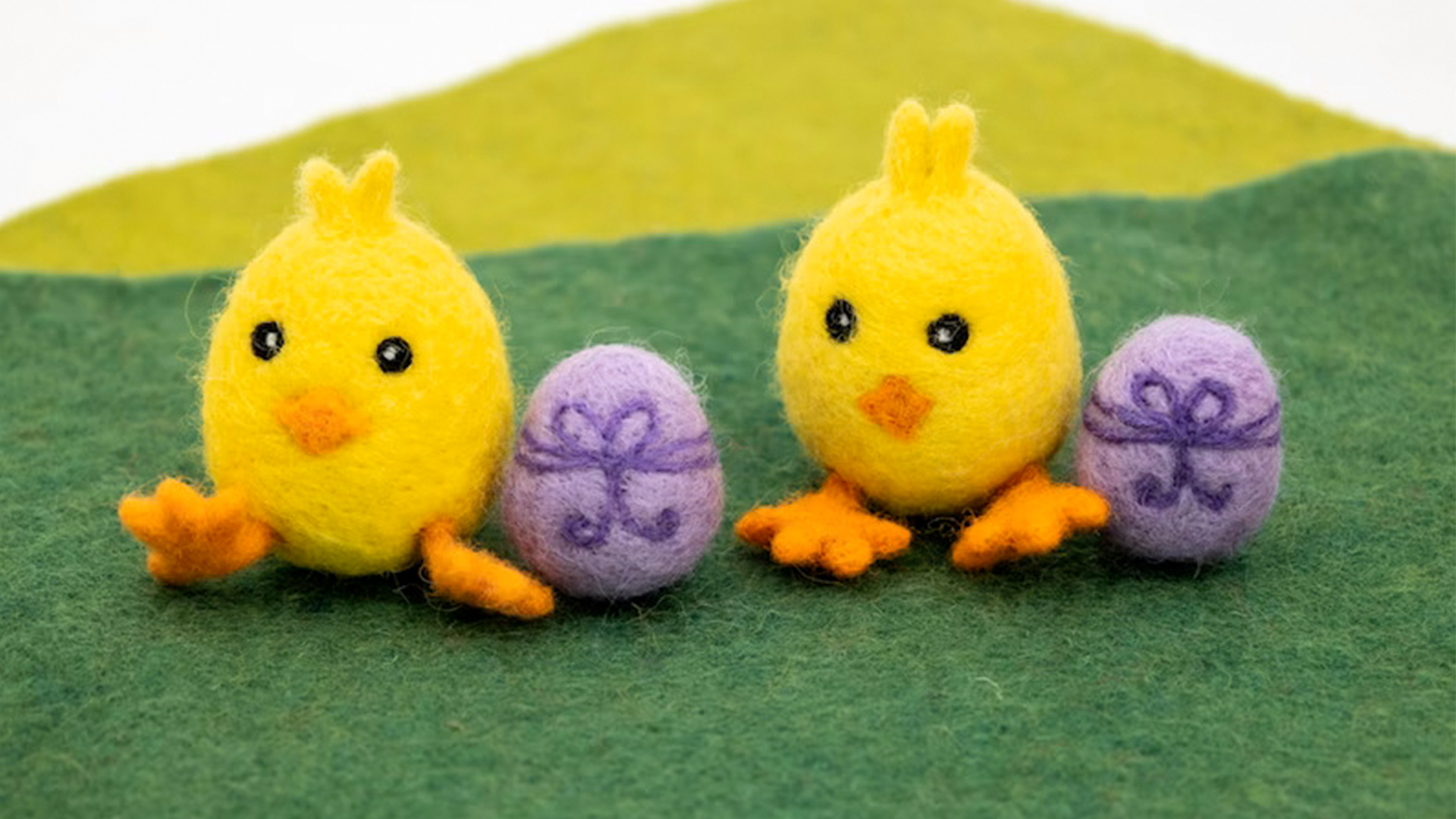What is the difference between wet felting and needle felting? It is one of the most frequently asked questions in the felting industry.
Wet felting and needle felting are two distinct processes that yield distinctly different results. But, many people wonder, is it better to buy dry or needle-felted crafts?
Felting is an ancient craft, and felt, as most of us are familiar with, is a textile material created by matting, condensing, and pressing wool together. In our 'Felting Techniques 101' blog, you can learn all there is to know about felting.
Here are some of the differences to consider when deciding to buy crafts made using two different techniques.
First, let’s look at our simple video of felting a ball using both wet felting and dry felting techniques.
First, let's see what some similarities are between wet felting and dry felting
-
Both felting methods are used to transform wool fiber strands by applying friction and agitation to bind the fibers together, creating craft items.
-
Wool shrinks as they are felted, regardless of the methods you use.
-
Both felting methods can be used to create similar types of crafts.
-
Crafts made after using both felting techniques cannot be reversed.
This is essentially where the similarities between the two felting techniques end. However, there are clear differences in how the final product turns out.
Now, let's see the core difference between wet felting and needle felting techniques.
Needle/ Dry Felting vs Wet Felting Techniques
Wet felting uses warm, soapy water and manual agitation of the wool to turn the fibers into felt. The wet-felted craft is finished by fulling or agitating the fibers against a rough surface, such as a washboard, which interlocks wool fibers together.
On the contrary, needle felting is a popular and quite simple felting technique that involves the up-and-down motion of felting needles on wool to create felt.

Needle felting does not require wool fulling which means it does not require soap, heat, and water to shrink the wool. Needle felting utilizes tools such as needle, sculpting needle, and sculpting tool to make the wool into shape.
What is The Difference in End Products?
The end product of the wet felted craft is smooth. The product is also slightly heavier because of the water used during felting. Once the wool has been felted using the wet felting method to give it a distinct shape, all fibers become meshed, making it impossible to felt additional items onto it.

In needle felting, the final product is slightly rougher and lighter than wet felt. Adding wool to the needle-felted piece is simple—you just poke more wool into it.
What Products are Made Using Each Technique?
Since wet felting helps create a distinct and firm shape, it is ideal for making simple items. They are mainly used for basic designs or shapes that don’t need intricate details. Wet felting can also serve as the foundation for needle felting projects.

They are perfect for creating shapes like felt sheets, felt balls, and hearts, among others. Wet felting is also ideal for creating sturdy items, such as bags, cat caves, and hats. However, getting a distinct shape is hard with the wet felting technique.
Needle felting, on the other hand, is perfect for products or designs that require careful attention to detail. Needling is ideal for adding design to your wet-felting products and is perfect for intricate designs.

Needling is also perfect for repairing wet felt projects and wool sculptures, as well as adding a decorative finish to your crafts. It is also easier to shape objects with the needle felting technique than with wet felting.
Can We Felt Products Of Any Size Using Both Techniques?
Well, the simple answer is no. Wet felting is easy to use for making both larger and smaller felt products. Whether it’s for your workout-savvy friend or to pamper your pet, wet felted items like our yoga mat and cat and dog beds are created using the wet felting technique. Needle felting is mainly used for making small craft items. It requires a lot of attention to detail and extensive effort to make a single felt craft. This makes it difficult to needle-felt large projects.
Needle Felting and Wet Felting: Which Technique is Better?
There is no clear answer as to which felting technique is better. Both methods have their own advantages for making crafts.
Both felting techniques are equally enjoyable to try as a hobby. For wet felting, all you need is wool, water, and soap, and you're ready to start. For needling, you will require wool and felting needles, and you can also use padding and a finger guide if you're just beginning.

Both felting techniques require a lot of labor; however, for producing products in bulk, needle felting demands more work because each piece must be made individually.
Here's everything you need to understand the differences between wet/ needle felting and dry felting. I hope this blog has clarified the distinctions between felt products created using these two different felting techniques.
For more information on the basics of felting, please refer to our previous blog. You can also find various felt crafts, made using both wet and dry felting methods, on our website and Etsy shop.
Categories
Other Posts
- The Hidden Costs of In-House vs. Outsourcing Production for Felt Businesses
- The Best Eco-friendly Gifts for Loved Ones in 2025
- 5 Eco-friendly Felt Products to Try in 2023 to Reduce Plastic Waste
- Show Dad You Care with These Handmade Wool Felt Fathers Day Gifts
- Interior Design Trends That Will Be Huge in 2023
